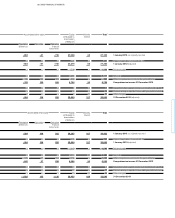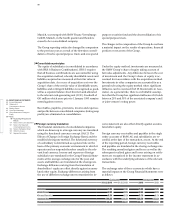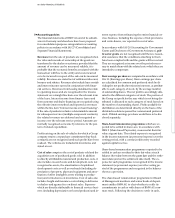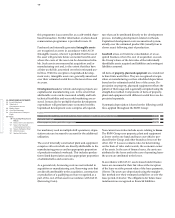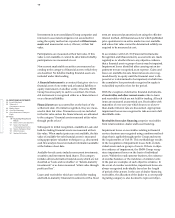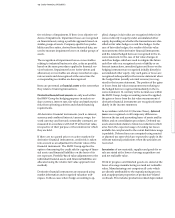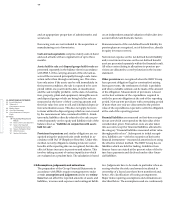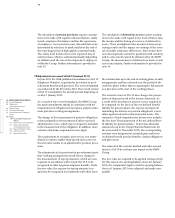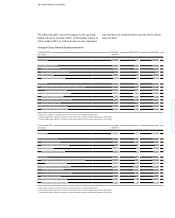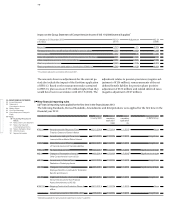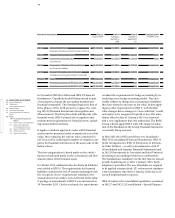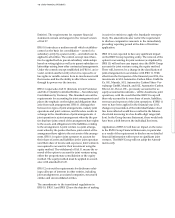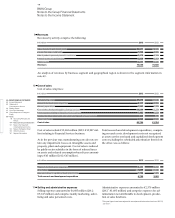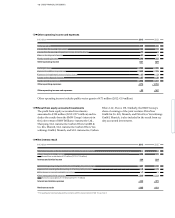BMW 2013 Annual Report Download - page 105
Download and view the complete annual report
Please find page 105 of the 2013 BMW annual report below. You can navigate through the pages in the report by either clicking on the pages listed below, or by using the keyword search tool below to find specific information within the annual report.
105 GROUP FINANCIAL STATEMENTS
checked for their validity. Actual amounts could differ
from the assumptions and estimations used if busi-
ness
conditions develop differently to the Group’s ex-
pectations.
Estimations are required to assess the recoverability of a
cash-generating unit (CGU). If the recoverability of an
asset is being tested at the level of a CGU, assumptions
must be made with regard to future cash inflows and
outflows, involving in particular an assessment of the
forecasting period to be used and of developments after
that period. For the purposes of determining future
cash inflows and outflows, management applies fore-
casting
assumptions which are continually brought up
to date and regularly compared with external sources of
information. The assumptions used take account in par-
ticular
of expectations of the profitability of the product
portfolio, future market share developments, macro-
economic developments (such as currency, interest rate
and raw materials) as well as the legal environment and
past experience.
The BMW Group regularly checks the recoverability of
its leased products. One of the main assumptions
re-
quired for leased products relates to their residual value
since this represents a significant portion of future cash
inflows. In order to estimate the level of prices likely to
be achieved in the future, the BMW Group incorporates
internally available historical data, current market data
and forecasts of external institutions into its calculations.
Internal back-testing is applied to validate the estima-
tions made. Further information is provided in note 24.
The valuation technique used to measure leased products
was further refined in the year under report at segment
level. Data, which can now be col
lated automatically
at a local level for each individual
contract, is aggregated
at the level of individual entities. The impact of the
change, which was recognised in the income statement
for the year ended 31 December 2013, was not material.
Similarly, the shift in earnings between
the Eliminations
column and the Financial Services
segment in 2013 was
also not material. Further information is provided in
note 24.
The bad debt risk relating to receivables from sales
finan cing is assessed regularly by the BMW Group. For
these purposes, the main factors taken into considera-
tion
are past experience, current market data (such as
the level of financing business arrears), rating classes
and scoring information. Further information is provided
in note 26.
The disposal of an asset or of a disposal group pursuant
to IFRS 5 is considered to be highly probable by the
BMW
Group if management is committed to a sales plan, an
active programme to locate a buyer has begun, the price
offered is reasonable in relation to the fair value of the
asset / disposal group concerned and it is expected at the
date of classification that the final negotiations with the
buyer and completion of the sale will take place within
one year. Further details can be found in note 33.
Estimations are required for the purposes of recognis-
ing and measuring provisions for warranty obligations
(statutory, contractual and voluntary). In addition to
statutorily prescribed manufacturer warranties, the
BMW Group also offers various categories of warranty
depending on the product and sales market concerned.
Warranty provisions are recognised when the risks
and
rewards of ownership of the goods are transferred
to the dealer or retail customer or when a new category
of warranty is introduced. In order to determine the
level of the provision, various factors are taken into con-
sideration, including estimations based on past
experi-
ence with the nature and amount of claims. These
estimations also involve assessing the future level of
po-
tential repair costs and price increases per product and
market. Provisions for warranties are adjusted regularly
to take account of new circumstances and the impact
of any changes recognised in the income statement. Fur-
ther information is provided in note 36.
In the event of involvement in legal proceedings or when
claims are brought against a Group entity, provisions
for litigation and liability risks are recognised when an
outflow of resources is probable and a reliable estimate
can be made of the amount of the obligation. Manage-
ment is required to make assumptions with respect to
the probability of occurrence, the amount involved and
the duration of the legal dispute. For these reasons,
the
recognition and measurement of provisions for liti-
gation and liability risks are subject to uncertainty. Fur-
ther information is provided in note 36.


